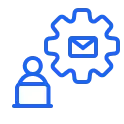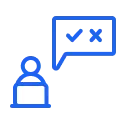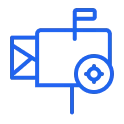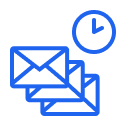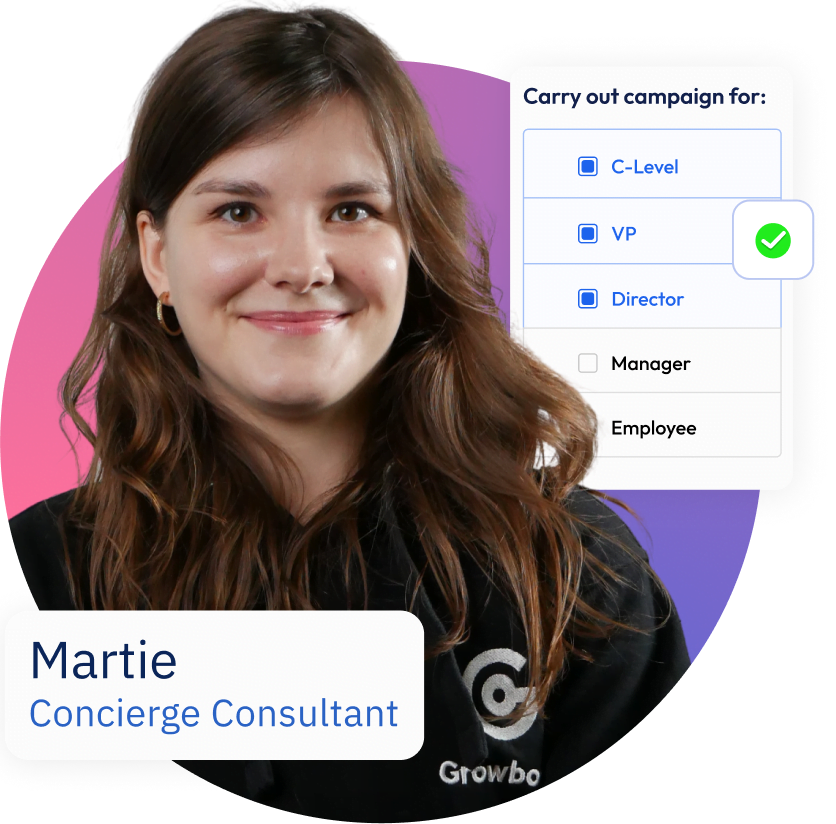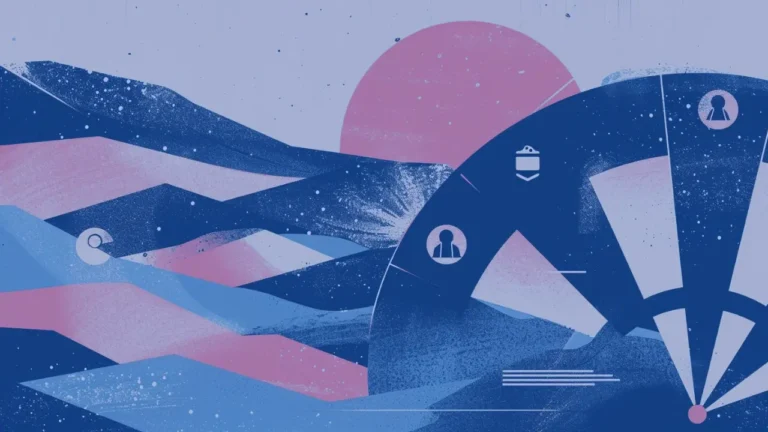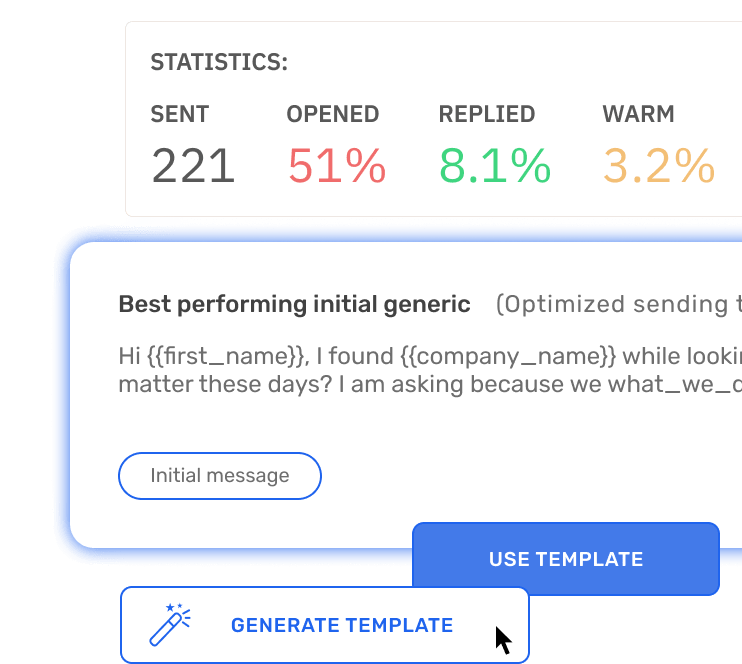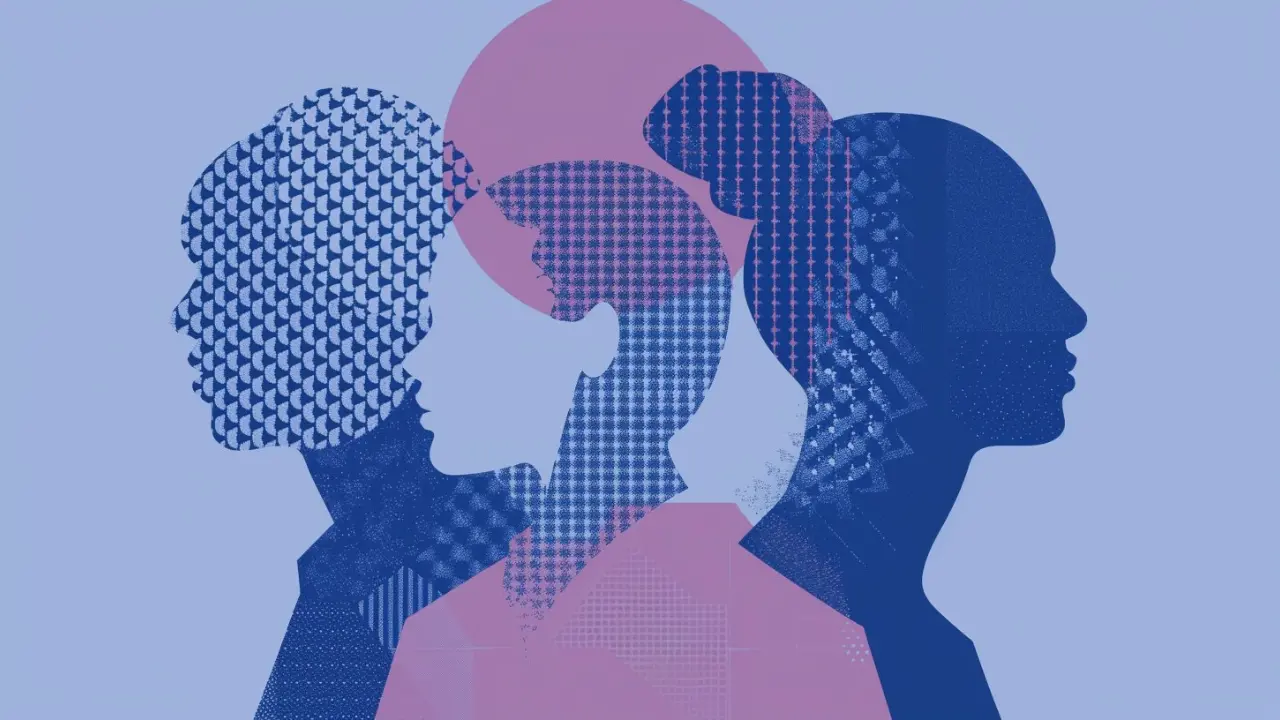TL;DR
- Ensure your LinkedIn profile is professional and reflective of your goals.
- Be clear about the value you’re offering to the message recipient.
- Conduct in-depth research on the person and their company to customize your message.
- Consider the timing of your message for higher chances of a response.
- Develop a clear strategy for follow-up if you don’t hear back immediately.
- Include a compelling reason for reaching out, establish a connection, and make a clear ask in your message.
- Increase message response likelihood with personalization, mentioning mutual connections, offering clear value, and keeping the message brief.
- Personalize your message while maintaining professionalism and patience in your outreach approach.
- Use LinkedIn’s filtering tools for precision targeting based on relevant criteria.
- Engage with the recipient’s content to lay the groundwork for your outreach.
- Craft your message opener to be personal, relevant, brief, and to provide a clear value proposition.
- Decide between a direct approach, stating your intent upfront, and an indirect approach, where rapport is built before making an ask.
- Align your message with your end goal, whether for sales, networking, job seeking, or partnership discussions.
- Create a LinkedIn profile that effectively represents your professional brand to support your messaging efforts.
- Improve your response rate by personalizing your messages with references to the recipient’s content, achievements, or mutual connections.
- Communicate your intent and value proposition clearly and concisely to respect the recipient’s time.
- Start with a template but modify it to fit the individual situation and add personal touches.
- Send polite reminders at appropriate intervals, and do not be overly persistent.
- Treat each interaction as a learning opportunity, even if it leads to a rejection.
- Consider the benefits of using InMail to reach beyond your network but be mindful of its potential intrusiveness.
- Efficiently identify the right recipients using LinkedIn’s granular search capabilities.
- Personalize your outreach, remain patient with follow-up, continuously enhance your profile, and learn from each interaction for better results.
- Address frequently asked questions regarding follow-up cadence, message length, avoiding being perceived as spam, the effectiveness of InMail versus regular messaging, and the use of automation in outreach.
- Leverage Growbots’ free trial for an enhanced cold messaging experience and streamlined outreach efforts.
Reach More with Less Effort
Connect with Potential Clients at scale
- AI message generator
- E-mail verification
- Multichannel sequences
- A/B testing
Introduction to Cold Messaging on LinkedIn
In the professional sphere of LinkedIn, cold messaging serves as a digital handshake, often laying the groundwork for future cooperation or business relationships. To ensure success, one must be strategic about the approach. Here are key considerations to kick off your LinkedIn cold messaging journey:| Consideration | Detail |
| Profile Optimization | Ensure your LinkedIn profile is complete, professional, and reflects your objectives. |
| Value Proposition | Be clear about what value you can offer to the recipient. |
| Research | Conduct thorough research on the person and company to tailor your message appropriately. |
| Timing | Take note of the best times to send messages for higher response rates. |
| Strategy | Have a clear strategy for follow-up in case you don’t get a response initially. |
Understanding Cold Messaging
The act of cold messaging, while seemingly straightforward, requires a blend of psychology and strategy to be truly effective. At its core, the objective is to create a connection from a place of no mutual history, trading solely on the value proposition within the initial contact.When executed well, cold messaging can be an invaluable part of a LinkedIn outreach strategy, seamlessly fitting into a broader effort to build and nurture a professional network. To help visualize this concept, the following factors are essential:- Understanding the recipient’s perspective and potential needs
- Presenting as a solution, not an interruption
- Creating a brief yet compelling narrative
The Basics of Crafting a Cold Message
The initial message to a potential LinkedIn connection serves as the linchpin of the cold outreach process. It must be crafted with precision and thoughtfulness to encourage engagement. Here are fundamental elements every cold message should contain:- The Reason: Why are you reaching out?
- The Connection: How can you relate to the recipient?
- The Ask: What do you want them to do?
| Element | Example |
| The Reason | “I noticed we share a passion for renewable energy…” |
| The Connection | “…especially after reading your article on sustainable technologies.” |
| The Ask | “Could we connect and discuss potential collaborations?” |
Strategies for Successful Cold Messaging
To turn your LinkedIn inbox into a gateway to productive professional relationships, several strategies come into play. It’s not just about sending messages—it’s about sending the right messages to the right people at the right time.LinkedIn research shows that sending a single, personalized message will increase your response rate by 30%.
Source: salesbread.com
| Strategy | Potential Impact |
| Personalization | Increases the likelihood of receiving a response by making the message relevant to the recipient. |
| Social Proof | Mentioning mutual connections or endorsements can lend credibility. |
| Offering Value | Providing a clear benefit or solving a specific problem can prompt a dialogue. |
| Conciseness | Respecting the recipient’s time with a brief message can facilitate quicker engagement. |
Messaging Etiquette on LinkedIn
LinkedIn, as a professional networking platform, demands adherence to certain unwritten rules of etiquette. Cold messaging, while ambitious, should never overstep the bounds of professionalism. It’s about making a connection, not demanding attention. Respect, courtesy, and relevance should be the pillars of the approach.Here is a quick checklist for maintaining proper messaging etiquette:- Personalize the message, but keep it professional.
- Do not send multiple messages in rapid succession; patience is key.
- Always be polite, even when faced with rejections.
- Ensure the message has a clear purpose and is not merely a sales pitch.
Targeting the Right People
The importance of targeting in cold messaging cannot be overstated. The objective should never be to cast a wide net in hopes that someone, anyone, will respond. Instead, LinkedIn provides tools that allow for precision targeting based on criteria such as industry, function, seniority, and even specific companies.To help illustrate the process of targeting the right audience, below is a table with key criteria and tips:| Targeting Criteria | Tips |
| Job Title | Focus on those who have the authority to make decisions or influence them. |
| Industry | Target industries where your experience or offerings are most relevant. |
| Company Size | Tailor your message according to the scale of the organization. |
| Location | Consider location if your service or product has geographical relevance. |
leave no lead unexplored
Every potential client within reach
- 180m+ contacts
- CRM integrations
- 23 Prospect filters
- 15 Company filters
Building a Connection Before Messaging
It’s wise to consider various touchpoints before sending out that cold message. Engaging with a prospect‘s content—liking, sharing, or commenting on their posts—can serve as an icebreaker. Such interactions can subtly put the name on the prospect’s radar, making them more receptive to future messages.This strategic pre-engagement can be thought of as “warming up” a cold contact. Consider endorsing a skill, congratulating on a new job, or interacting with posts they’ve shared recently to establish a sense of rapport.First Impressions Matter
In terms of LinkedIn cold messaging, as in life, first impressions are crucial. Recipients often gauge the worth of a message by its subject line or opening sentence, deciding within seconds whether it warrants further reading.To help make a standout first impression, consider the following table outlining elements of an effective opener:| Opening Element | Impact |
| Personalization | Shows you’ve taken the time to know who they are. |
| Relevance | Connects the message to the recipient’s interests or goals. |
| Brevity | Ensures the message is quick to read and to the point. |
| Value Proposition | Piques interest by highlighting what’s in it for them. |
Exemplary LinkedIn Cold Message
The essence of a LinkedIn cold message lies in its ability to convey a compelling narrative within the confines of a brief text. A masterfully crafted message is clear, concise, and focused, with a distinct purpose—and it leaves a lasting impression.An effective LinkedIn message often contains the following:- A warm greeting that feels personal.
- Mention of a commonality or point of interest to forge a connection.
- A concise presentation of the value proposition.
- A clear and polite call to action.
Hi [Recipient’s Name],
As someone who is deeply involved in [Industry], your contributions have been followed with great interest.
Your recent article on [Topic] offered a fresh perspective on [Specific Aspect], which aligns with the initiatives at [Your Company].
With [Your Company]’s mission to [Briefly describe company mission/goal], there is a significant synergy between the work.
Ideas on [Specific Idea from Post] could greatly complement the approach, especially as [mention any relevant company project/news] is in progress.
Beyond immediate goals, a partnership could help both parties make a broader impact in [Industry].
Are you available for a 15-minute chat next Tuesday or Thursday to discuss this exciting possibility?
Looking forward to the opportunity of collaborating with you.
Warm regards,
[Your Name]
Direct Approach vs Indirect Approach
When initiating contact on LinkedIn, the choice is between a direct approach, where the intent is stated outright, and an indirect approach, where rapport is built before making an ask. Each strategy has its merits and can be effective in different situations.Here’s a breakdown of both approaches to help choose the most appropriate path:| Approach | When to Use | Pros | Cons |
| Direct | When your value proposition is clear-cut and compelling. | More efficient use of time. | Runs the risk of coming across as too aggressive. |
| Indirect | When seeking to establish a relationship or understand needs better. | Builds rapport and trust. | Requires more time and effort. |
Writing for Different Objectives
The objective behind sending a LinkedIn cold message can range from seeking a job opportunity to proposing a business collaboration or making a sale. It is paramount that the message aligns with the end goal.Consider this table for tailoring the message to different objectives:| Objective | Key Focus |
| Sales | Highlight the unique benefits of the product or service. |
| Networking | Stress common interests or mutual connections. |
| Job Seeking | Draw attention to relevant skills and experience. |
| Partnership | Discuss mutual benefits and potential synergies. |
Creating a Strong Profile to Support the Message
The LinkedIn profile is often the first place a recipient of a cold message will visit to vet. Hence, ensuring the profile effectively showcases the professional brand is vital in supporting the cold messaging endeavors.Best practices for a strong LinkedIn profile include:- A professional photograph that reflects the image you wish to project.
- A headline that captures expertise and value.
- A summary that tells the professional story and aspirations.
- Detailed experience sections that exhibit successes and skills.
The Role of Personalization
Personalization can be the difference between a new connection and being ignored. LinkedIn messages that are tailored to the recipient show that research has been done and they are seen as more than just another contact.According to various researches, 20-55% of prospects will accept a LinkedIn cold message if it is personalized and uses 2nd-degree contacts.
Source: salesbread.com
- Reference a recent post or article the recipient has shared.
- Congratulate them on a recent achievement or work anniversary.
- Mention mutual connections or shared affiliations.
The Importance of Clarity and Brevity
In the information-heavy landscape of LinkedIn, clear and concise messages often yield the best response rates. A message that gets straight to the point reflects respect for the recipient’s time and attention, increasing the likelihood of it being read and acted upon.Consider these elements for crafting succinct messages:- Clarity: Communicate the intent and value proposition without the need for interpretation.
- Conciseness: Keep the message short; aim for no more than a few sentences.
- Purpose: Ensure each sentence serves a distinct purpose in the message.
| Clear Message Example | Brief Message Example | Purposeful Message Example |
| “Reaching out to discuss potential collaboration opportunities related to your sustainability initiative.” | “Could we connect this Thursday for a quick call about a partnership?” | “As a fellow alum of XYZ University, I’d love to discuss how we might support each other’s career growth.” |
Using Templates Wisely
While templates can save time and ensure consistency, their effectiveness fades if they are not adapted to each unique interaction. Thus, it is important to customize templates to maintain a personalized touch.Here are some pointers on using templates smartly:- Use templates as a starting point, but modify them to suit the individual situation.
- Inject elements of personalization to make each message feel tailor-made.
- Update templates regularly to reflect any changes in strategy or market dynamics.
Following Up on Messages
Persistent follow-up can be just as important as the initial message. Sometimes, a gentle reminder can prompt action from connections who missed the first message or forgot to reply.To visualize the follow-up process, consider this timeline:| Follow-Up Interval | Action |
| 1 Week After Initial Message | Send a polite reminder, reiterating the value proposition. |
| 2 Weeks After Initial Message | Follow up with additional information or a new angle on the proposition. |
| 1 Month After Initial Message | Reach out one last time, expressing continued interest in connecting. |
Handling Rejections and Non-Responses
Not all cold messaging endeavors will result in positive engagement, and dealing with rejection is part of the process. Learning from these experiences is essential for refining the strategy.When faced with rejection or silence, consider the following:- Reflect on the content of the messages to identify potential areas of improvement.
- Use rejection as an opportunity to seek feedback, whenever possible.
- Maintain professionalism, thank them for their time, and move on.
Using LinkedIn’s InMail Feature
LinkedIn InMail allows sending messages to users not connected with. However, it should be used judiciously given its higher visibility and potential to look like unsolicited contact.Weigh the pros and cons of using InMail:| Pros | Cons |
| Higher delivery rate to inboxes | Limited number of InMail credits |
| Can reach non-connections | May be perceived as more intrusive |
A LinkedIn InMail sent as a last resort has a response rate of 27%.
Source: skylead.io
Leveraging LinkedIn’s Search and Filter Tools
LinkedIn’s advanced search and filtering tools are invaluable for identifying exactly who should be messaged. These tools allow pinpointing the most suitable candidates for outreach based on numerous criteria.Utilize the search and filter tools effectively:- Use keywords to find profiles matching specific skills, interests, or experiences.
- Filter by location, company, industry, or job title for targeted messaging.
- Save searches to streamline the prospecting process.
Best Practices for Cold Messaging
As we conclude, it’s crucial to encapsulate the best practices of LinkedIn cold messaging within a single perspective:- Always personalize and target messages to the appropriate audience.
- Patience and persistence are virtues; follow up accordingly.
- Constantly optimize the LinkedIn profile to complement outreach efforts.
- Use rejections as stepping stones to refine the approach.
no prior experience & time required
Find your winning outbound formula with Concierge
- 95% activities on our behalf
- Avoid in-house SDR hire
- Learn & Take over anytime
- Numerous A/B tests
